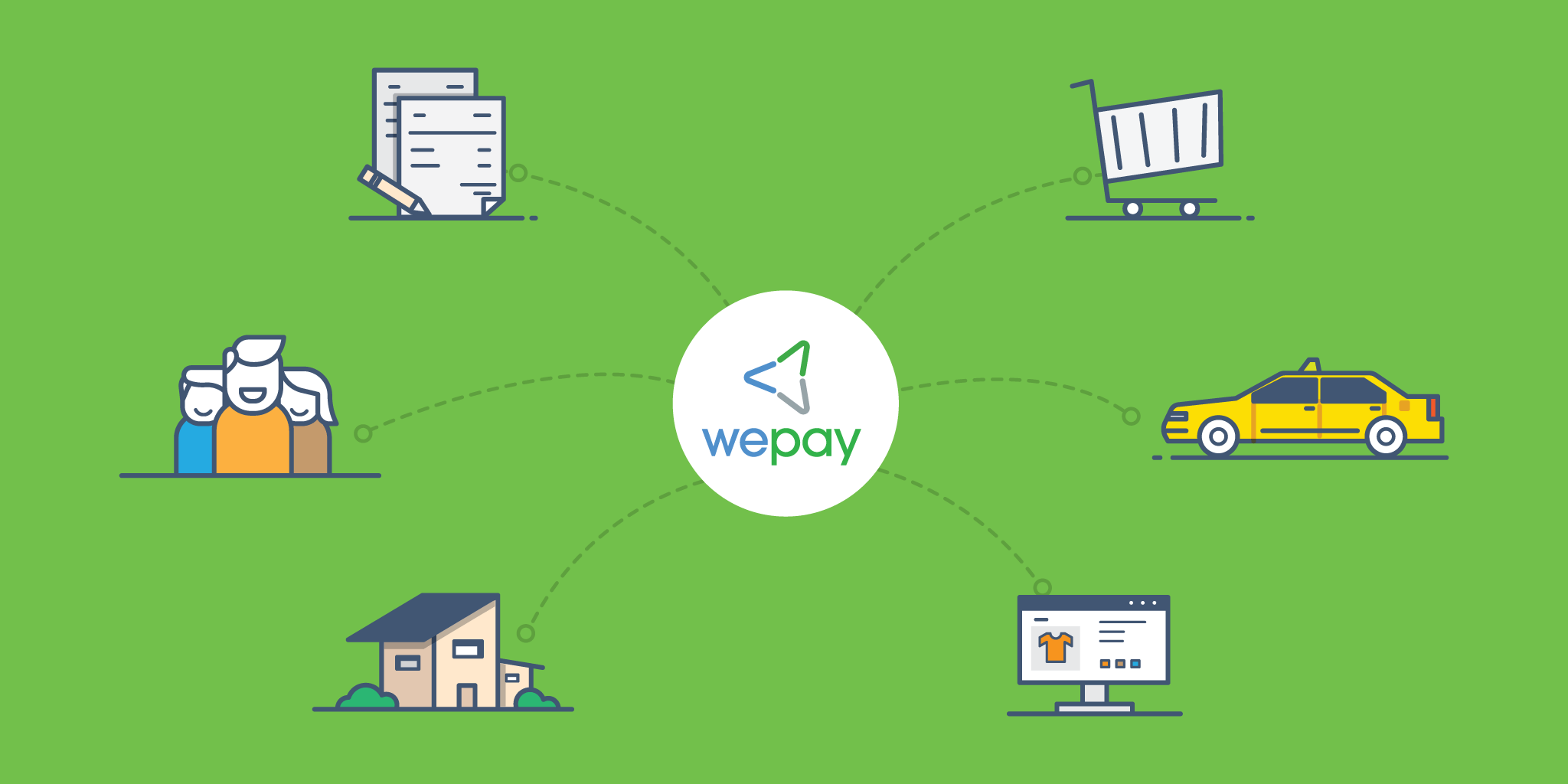The idea of exchange is a fundamental aspect of any relationship. And it is this idea of exchange that facilitates healthy interactions between two or more interdependent groups, each adding value to the other.
Exchange has also been central to the functioning of businesses. This is especially true for platform businesses, which empower those creating value and those consuming it.
Think of FreshBooks. Or MeetUp. Or Uber and AirBnB. They facilitate exchange on their platforms, build meaningful connections on these platforms as ecosystems, and create value for the producers and consumers.
And they facilitate it at scale.
The number of transactions that take place on these platforms is staggering. Uber had recently announced that its drivers completed 2 billion rides. Xero recorded $300 billion in transactions last year.
Sangeet Paul Choudary, in his blog post On Execution: Building Platforms, wrote, “Platform business models are not built around a user or a process, but an interaction between the users.”
One of the important reasons that these companies are surviving the scale of exchange, and are continuing to grow, is that they see themselves as platforms that nurture interactions between users.
And then there is WePay, a Y-Combinator company.
WePay’s ideal, to power exchange, encourages the creation of platforms that bring people together. And this harkens back to a popular idea that positive and valuable exchange sits at the heart of continued social behavior, or in this case, continued commercial activity.
But how do you enable these exchanges at scale within the ecosystem, at minimized cost and maximized returns?
The founders, Rich Aberman and Bill Clerico were identified as the Best Young Tech Entrepreneurs in 2011 by Bloomberg Business. WePay was also ranked 62 in the Inc. 500 2015 – the annual list of the fastest-growing private companies in America, with 4,354.5% growth over 3 years.

We spoke to WePay’s Co-Founder & Chief Strategy Officer, Rich Aberman, to understand the world of payment gateways, platform businesses, and channel partnership strategy.
An excerpt of the interview:
From Payment Gateway for Shared Expenses to Becoming Payment Partners
Remember the times when you would plan a party with your friends, or a ski trip, or a movie, and one person would end up paying for everyone, hoping that the money will come back some day?
Up until a decade ago, keeping track of who owes how much to whom, and transferring the money, were cumbersome. WePay started out as a group payments app that intended to solve that – track and transfer shared expenses.
“We were selling payment services directly to consumers. And this was 8 years ago, at the beginning of wallets and native apps. We spent about two years building out our core payments functionality around that while doing a lot of sales outreach in places where those use cases are common like on college campuses and fraternities.
The payments engine we built was actually really good, but we very quickly ran into challenges. Selling to consumers acquiring them at scale was hard, because they were price-sensitive, cost of customer acquisition was really high, transaction volume was really low.
And the pain point that we were addressing, i.e. shared expenses, was ephemeral, meaning -they found themselves using it only when there was a group activity such as a ski trip or roommates who needed to collect rent.
So we took the payments system we’d built for that product and looked for other problems we could apply it to, and for a variety of different reasons, the product evolved for more formal groups and organisations, non-profits and eventually small businesses.
And so, there were two pieces to our product – the first was, an instant merchant account, which allowed us to instantly onboard, what we call, small or micro or non-traditional merchants. We built it such that it would ideally allow anybody to accept credit card or bank payments – with very little time and complexity and a simple application process.
The second piece we ended up building were the features and functionalities that enabled the users to get paid in a variety of different use cases.
For instance, for non-profits and organisations and small businesses, they don’t just need a merchant account, they need the ability to invoice customers. We ended up building these tools for different merchant verticals. And that was our product. It was totally going to accept payments through credit cards and its features and functionalities would let you really get paid depending on the use case.”
Interestingly, Braintree bought an app called Venmo, that facilitates peer-to-peer transactions across different use cases in 2012, much like WePay. And it was founded a year after WePay had launched. Subsequently, PayPal bought Braintree in 2013. But Venmo benefitted from the increasing ubiquity of smartphones across the globe.
WePay’s evolved to adopt a channel strategy, partnering with softwares such as event management tools, donation tools, invoicing tools, and ecommerce tools to offer an integrated payment solution.
“We partner with those companies, and allow them to do what they do the best, which is building the right features and functionalities for different merchants and different use cases and we do what we do best which is matching the payment app to their business.
We subsequently help them in winning that market because we will allow our partners, the software companies to incorporate payments as a core part of their product offering.
The turning point for WePay is when we decided to open our payments engine up as an API for other companies to build on top of. It immediately took off in a big way, and it prompted a revelation.
Payments is a volume game — margins are really low, so you need a massive amount of merchants processing with your before you make significant money. We had been thinking that we had to build platforms ourselves and reach those merchants directly. But an API acted as a force multiplier.
Rather than having to sign, say, 1,000 merchants on our own, we could simply sign on to power a single platform and reach the 1,000 merchants that used it in a single deal.
Not only that, but not having to do all that extra sales and development work allowed us to focus on the things we excel at — payments and fraud management — so that we could build a better product.
We discontinued all of our other business lines in 2013, and have since, implemented a fully integrated channel strategy, where we go to market only through channel partners, like Chargebee, and service their payments businesses as opposed to selling WePay brand and WePay products. It’s been a wild ride since then.”
Pivots? Or Evolution?
WePay’s transition as a company was gradual. In our story on pivots, we ask, “What if, instead of letting our experiences hinder our quests, we combine them with the new things that we discover, and come up with something special?”.
And that question applies to WePay, more so. WePay did not really change product vision. They continued to stay in the payments space. It was more of a shift in terms of the targeted customer segment and the value proposition. So was it really a pivot or an evolution? And, given a chance, what would WePay have done differently?
“It was certainly more like an evolution, where the product, customer base and company evolved. I think the only point in time that would really point to a pivot is probably 2014, when we retired from our direct business. But even then, we never hived out and started a new one.
Our channel business, our integrated payments business, so to speak, had already eclipsed the direct business by entirely new target.
We were excited about what we saw as a path to disruption and capitalising on what we saw in the market that we gave into the direct business. So, we went all in or not. So that’s a pivot, where the system moved to a stronger part of the business.
Even as we evolved, we first started off going after consumers for shared expenses and that increased our conversations, which turned into profits and that turned into small businesses.
We, then, released the API which brought in the same type of end users on other platforms and other marketplaces. It happened more gradually than in the short term.
We never really took a hard pivot, but our product and our focus has evolved dramatically over the years. Retiring our direct business and going all-in on an integrated channel strategy was the important decision we’ve ever made, but we should have made it much sooner.
It was a hard decision at the time because our direct business was still 40% of our revenue, it was the business we started the company to build, and we had built a brand around it.
However, we had learned a few things along the way, and we should have connected the dots sooner.”
The Future of Businesses & Integrated Payments
We wanted to understand the evolution into payments solution for platform businesses? And how did WePay handle large transactions which are symptomatic of marketplaces –
“We think that in the future most business will happen on some kind of platform, that payments will be an integrated part of that platform, and that the best way to provide value as a payments company in that world is to offer seamless payment functionality to platforms.
We’re seeing a lot of growth in the market for business software providers that help companies manage their customer interactions: CRM providers, invoicing software, shopping cart providers. They are providing a lot of the same functions, such as accountability and decreased friction, and they have a lot of the same payments challenges. We’ve seen a lot of success from companies like this that work with WePay.
What used to happen is, businesses would get a merchant account from one company, generally an independent sales organization, then it would go to another company for the gateway software needed to actually charge cards using that merchant account.
The first thing that happened was those functions consolidated, and you had services like PayPal that provided everything you needed to accept payments in a single package.
What’s happening now is, payments is starting to become an integrated part of many different types of business software. This rise of “integrated payments” has put a lot of pressure on the payments players who just sell merchant accounts or payment gateways. For example, it no longer makes sense for a company to use one software to send invoices, but then turn to another vendor to actually collect payments on those invoices.
One way we’ve tackled large transactions is to offer payments through ACH as well as credit cards. ACH has a number of benefits for large transactions.
It has lower fees, which is great because a couple of percentage points in fees ends up being a significant cost savings when transaction sizes get very large. It also sends money directly between bank accounts, meaning it’s not subject to credit limits.
ACH payments have been very successful for many of our partners where large transactions are common, such as BuilderTREND, a software for managing building contractors, or Invaluable, which provides software for auction houses like Sotheby’s.”
‘You Don’t Acquire Customers, They Acquire You’… Of WePay’s Channel Partnership Strategy
With several soft pivots, WePay has seen different segments of people with different needs. With the idea of customer acquisition, that ‘you don’t acquire customers, they acquire you’, we wanted to know how WePay made itself legible enough in different stages, to be acquired, in this case, by partners instead of customers.
“I agree customers acquire us. Our acquisition strategy comes from the sales and business development perspective. We partner with other software companies that have their own merchant base or customer base, who want to bring payment solutions to their customers.
Simply, we go out and win partnerships with our sales and business development effort, and through those partnerships, we enable our partners to offer not just their value add functionality for specific types of merchants, but we allow them to offer integrated payment services as part of that.”
Of Marketplaces & Platform Businesses
There are two kinds of enablers in marketplaces. Some early stage marketplaces tend to take the money first to their own accounts, and then release it to their providers after the product has been shipped or the service completed.
Others prefer to simply charge the seller afterwards. We asked the pros and cons of each solution, and which is better suited for marketplace businesses.
“The question is, how do you define a platform business. For me, the part that defines the product business is that they are empowering either merchants or producers or sellers – I like the term producers – they are the actual creators of value, as opposed to simply selling their services to end consumers in a one-to-one transaction.
For instance, we figure out the same characteristics as Chargebee. Chargebee is also a software provider that is empowering a certain kind of business owner who performs a specific function, and part of that function includes the capability to accept payments from those customers.
Chargebee provides software for a certain kind of business, to run more effectively and empower merchants to grow their business. It helps merchants manage their customers and to accept payments from them.
Certain types of platforms, marketplaces for example, may want to charge buyers, but not want to release the funds to sellers until their services are delivered. And that may be part of the value that the marketplace provides – it provides trust and safety.
And the way they process the transactions are specific to the use case that their platform is serving and the context and the value that it is providing. In that case, they should opt for that model.
It really depends on the use case of the marketplace in what value they are trying to provide to their merchants and their customers – buyers and sellers. What I would say, as WePay, the payment partner is, it’s incumbent upon us to support whatever model our partners want to deliver.
Now I will say this. I don’t think it ever makes sense for platforms and marketplaces to charge cardholders and take possession of those funds in their own bank accounts. And then to pay out sellers. That’s when platforms and marketplaces find themselves right in the risk and regulatory crosshairs.”
The road ahead
Innovations are born – sometimes they change the world in a singular aha moment, and sometimes they come as a combination of several ideas in several iterations, making one big impact.
These ideas come when you are gazing into space, or when you are in a shower, or when talking to people, or even when you face a problem yourself.
WePay does not claim to be a tech/payment giant. It does not try to dominate an already crowded market. What it does is enter crevices and fill up gaps where a solution is really needed.
They have now expanded their foothold into UK and Australia is the next potential market overseas, WePay plans on making their product robust and easier to integrate with for the channel partners.





